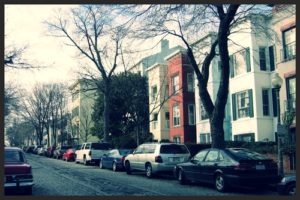O & P Streets Rehabilitation
 On behalf of the District of Columbia Department of Transportation, the UM team led a highly successful public outreach effort for the 18-month reconstruction of six blocks of O and P Streets, NW, in the Georgetown section of Washington, D.C. Complicating the job was the reality that historic cobblestones and streetcar rails that were central to the reconstruction had been the subject of decades of debate and legal action. Additionally, the elite Georgetown neighborhood, which counts U.S. senators and secretaries of state among its ranks, is populated by individuals accustomed to getting their way.
On behalf of the District of Columbia Department of Transportation, the UM team led a highly successful public outreach effort for the 18-month reconstruction of six blocks of O and P Streets, NW, in the Georgetown section of Washington, D.C. Complicating the job was the reality that historic cobblestones and streetcar rails that were central to the reconstruction had been the subject of decades of debate and legal action. Additionally, the elite Georgetown neighborhood, which counts U.S. senators and secretaries of state among its ranks, is populated by individuals accustomed to getting their way.
Delivering the improvements in the dense row-house neighborhood imposed enormous impacts on residents, schools, businesses and travelers and had major potential for a contentious relationship with residents. With UM helping our client engage affected neighbors early, often, innovatively and intensively, we helped DDOT forge a positive working relationship with neighboring residents.
The tactics we designed and executed included:
- Establishing a Community Relations Team to address potential community impacts before construction began and in advance of each new phase of the project
- Conducting door-to-door outreach on several occasions to personally interface with residents and distribute phase-specific information
- Organizing three well-attended and positively-received public meetings
- Producing a brief video report on the project’s history and unique construction challenges
- Developing a dedicated project website
- Utilizing social media to distribute weekly construction updates and daily parking updates
Results
- On-time, on-budget completion
- Residents were so pleased with the project they nominated it for D.C.’s Excellence in Historic Preservation Award
- At a public meeting in front of an estimated 100 community members, D.C. Councilmember Jack Evans warmly praised the project’s good-neighbor construction practices and effective public outreach
- Extensive and positive media coverage included this in-depth WAMU (NPR) feature.
